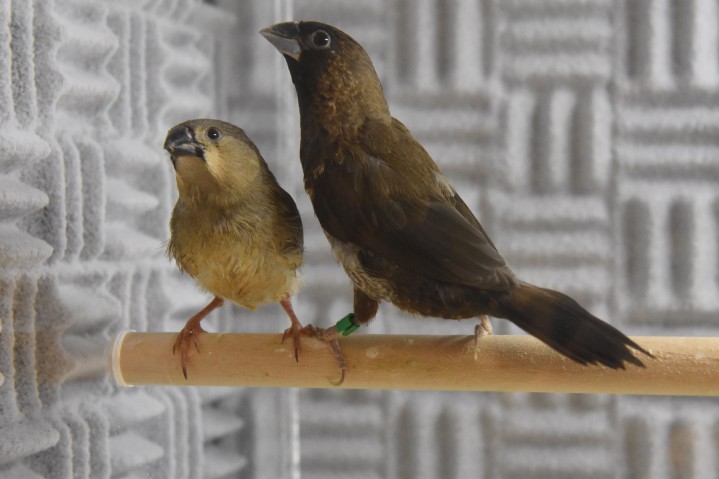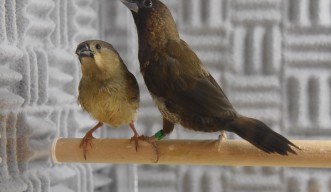The Song of Silence

Like humans learning to speak, juvenile birds learn to sing by mimicking vocalizations of adults of the same species during development. Juvenile birds preferentially learn the song of their own species, even in noisy environments with a variety of different birdsongs. But how they can recognize their species’ song has, until now, remained a mystery. In a collaborative study, neuroscientists and a physicist at the Okinawa Institute of Science and Technology Graduate University (OIST) have uncovered an innate mechanism for species identification based on the silent gaps between birdsong syllables.
“We co-designed an experiment that works within the constraints of neuroscience while satisfying the requirements of physics,” says Professor Mahesh Bandi, head of the Collective Interactions Unit at OIST.

Dr. Makoto Araki and Professor Yoko Yazaki-Sugiyama of OIST’s Neuronal Mechanism for Critical Period Unit and Professor Bandi performed a cross-fostering experiment in which juvenile zebra finches were raised by Bengalese finch foster parents to examine how their birdsong develops under the tutoring of a different species. Birdsong is comprised of stereotypical repeats of a few syllables, called ‘song motifs’, in which syllables are separated by silent gaps. The findings, published in Science, reveal that the fostered zebra finches learned morphologies of Bengalese finch syllables, including syllable duration, but transposed onto zebra finch silent gap patterns. This suggests that temporal gaps between syllables are innate, while syllable morphology can be learned.
“The fostered zebra finches sang the Bengalese finch song with a zebra finch accent,” says Professor Yoko Yazaki-Sugiyama.
To determine the neural basis of this innate species detection mechanism, the researchers recorded the activity of neurons in the auditory cortex of adult zebra finch brains during exposure to birdsong. They discovered a first set of neurons which registered temporal gaps of zebra finch songs, as well as a separate second set of neurons that are responsive to syllable morphology.
Using trains of song syllables or white noise separated by silent intervals of varying lengths, they discovered that the first set of neurons are most sensitive to silent gaps with the same duration as the silent gaps found in natural zebra finch song. The neurons did not respond to syllable trains if the duration between syllables was too short or too long. This phenomenon persisted in juvenile zebra finches raised in isolation or cross-fostered by Bengalese finch parents.
This first set of neurons responded strongly to natural zebra finch song. They neither responded to artificial zebra finch song in which the duration of the silent gaps between syllables had been increased, nor to the songs of other species. Together these findings support the existence of neuronal mechanisms that use silent gaps between syllables of birdsong to detect songs of the same species during learning.
“This first set of neurons operate as a kind of neural barcode reader,” says Professor Yazaki-Sugiyama.
Each male zebra finch has to develop a unique song that is different from other zebra finches, while maintaining species specific identity. Parallel processing of syllable morphology and temporal silent gaps between syllables discovered by OIST researchers could help explain how these two competing criteria are satisfied.
Decades ago, researchers at Bell Laboratories seeking to boost telecommunication channel capacity developed tools in voice activity detection as well as Information Theory. This collaborative team work by researchers from different disciplines applied Information theoretic tools and discovered similar strategies are hardwired in bird brains to recognize and learn songs of their own species. These findings tell us there is information in silence.

















